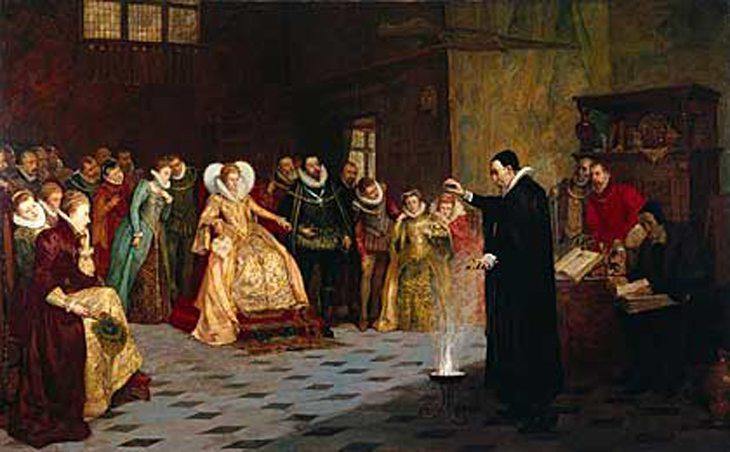
Gloriana - Elizabeth I
Share
The story behind our new bust candle

When we first enquired about the provenance of a captivating bust we had seen in an auction in early summer, we were disappointed to receive the rather succinct response “unknown, brought from an antique shop.”
But with her piercing stare, her pronounced collar, and the meticulous detailing of her hair and outfit we knew we had to make her part of the Vendeo family!
When she arrived, we set about preparing her in readiness to create a mould. Fast forward a couple of weeks and the beautiful new edition to our product line was complete. But one big problem remained:
Who was she?
This was going to require some serious detective work. But where to start?
At first, we concentrated on what looked very much like a ‘Medici collar’, which is a large, fan-shaped collar, usually made of lace, wired to stand upright at the back and sloping to meet a square neckline at the front.’
The style was made fashionable in the 17th century by the Medici women, especially Marie de Médicis, Queen of France, and was revived in a less extravagant form in the 19th century.
Source - Oxford Lexico
Could this be Marie de Médicis?

Upon closer inspection of the bust, and more specifically the gown, we noticed some things that suggested Marie de Médicis might not be the person we were looking for. The sleeves were short, the embroidery was not elaborate enough, and most importantly, she had two pearl necklaces. It was common practice during the Renaissance Medici period that if a lady wore two chains, one of those was to be of religious significance, this typically being a cross. Our bust had two necklaces, but no cross.
We started to take a closer look at the bust, and in particular, the gown and some things that did not point to Marie de Médicis.
So who would wear a Medici collar, have prominent embroidery that was floral and also display such extravagance in her hair and jewellery?
It all pointed to Elizabeth I
The daughter of Henry VIII and his second wife, Anne Boleyn. Elizabeth lived from 1533 to 1603 and was the last of the five members of the Tudor dynasty who were sovereigns.

Picture Credit: Marcus Gheeraerts the Younger
- She wore a Medici collar.
- She had long hair and often would be seen with head crowns and decoration.
- The similarities of the face.
- Her eyes are half-lidded. Downcast or avert eyes were a sign of feminine modesty during the Renaissance / Tudor period.
- It was widespread for dresses in this Tudor period to display floral decoration.
- On both the dress and collar, you can see a flower embroidery. It looks very much like a pansy, a favourite flower of Elizabeth.
- There are pearls in her hair. Queen Elizabeth's heart-shaped hairstyles, decorated with pearls, are very famous.
We also think it had simlarties with the Terracotta bust of Queen Elizabeth I by John Micheal Rysbrack (1693-1770)

Picture Credit: The Royal Collection Trust
So why Gloriana?

Gloriana was the name given by the 16th-century poet Edmund Spenser to his character representing Queen Elizabeth I in his poem The Faerie Queene. It thus became the popular name given to Elizabeth I
So, there you have it! Our latest creation Gloriana is born, and we think you’ll agree she is truly stunning and will add a touch of history to any interior and be a real conversation starter!
You can puchase Gloriana on our website here
Reference: Epochs of Fashion - The Tudor Elizabethan Era
Reference: Fashion History - Fitny